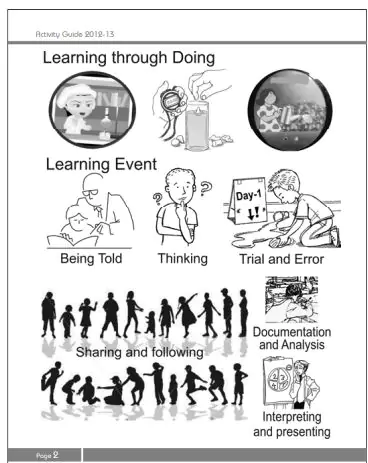‘NCSC Project File’ PDF Quick download link is given at the bottom of this article. You can see the PDF demo, size of the PDF, page numbers, and direct download Free PDF of ‘NCSC Project File’ using the download button.
NCSC Project File PDF Free Download

NCSC Project File
1. CSC – the beginning The seeds of the programme of the children’s science congress (CSC), in the way of an exercise to carry out small research activities at the micro-level were planted in Madhya Pradesh by an NGO called Gwalior Science Center.
It was later adopted by the National Council for Science and Technology Communication (NCSTC), the Department of Science and Technology (DST), and Government of India for carrying out national-level activities through the NCSTC-Network (a network of Non-Government and Government organisations working in the field of science popularization) as a national organiser.
It was a time when many of the country’s crusaders of science communication were experienced with massive science communication exercises of Bharat Jana Bigyan Jatha and Bharat Jana Gyan Bigyan Jatha.
It was felt that the large-scale activities for developing scientific awareness among the masses are to be continued as regular activity, so, this programme was launched nationwide in 1993, under the nomenclature of National Children’s Science Congress (NCSC), with an expectation that it would generate scientific temperament among the teachers and students, and spread among various stakeholders of the society. The programme of NCSC has been fruitfully conducted for the last 19 years.
2. CSC – an overview Children’s Science Congress is targeted to spread the concept of the method of science among the children through their project activities adopting the principle of ‘Learning through doing’.
The mandate of participation is that, the children will carry out a project on a particular topic in relation to theme and subtheme decided for the year.
The study is to be carried out in the neighbourhood of the children where they live. For this, the students form a group with their like-minded friends/classmates and the study is carried out under the supervision of a guide. It is noteworthy that, CSC programme is not only for school-going children but is also open for children outside the formal boundary of schools, in the age group of 10 to 17 years (where 10 to 14 years is considered as junior group and 14 to 17 years as a senior group).
Further, it is not mandatory that a guide must be a school teacher; any person with fair knowledge of dealing with children and methods of science is considered eligible to guide the children, but should not be a direct relative of any of the children. The exercises of project activities, as a thumb rule, encourage the children to explore, think, serve and wonder. It is capable to imbibe the following temperament/quality/skill of the children:
· Observation,
· Making measurements,
· Making comparisons and contrasts,
· Classification,
· Estimation,
· Prediction,
· Interpretation,
· Critical thinking,
· Creative thinking,
· Drawing conclusions and
· Cooperative skill
Therefore it is ideally expected that any group of children will undertake project work with a perspective of the continuous effort of questioning and experimentation (as in fig-1). Here, observation incorporates anything the children observe in their daily life in the locality, in relation to the theme defined for the year.
The observation should be followed by relevant questioning such as “What? Where? When? Why? How? Whom?”. In the search for finding out the answer to the question(s), one is required to review different literature concerning the issues in the study.
A review of such literature basically and ideally helps in framing the steps towards the study and experimentation. In the process, one may also discuss with experts of the relevant fields to get information and advice. Initiatives for such activities must be encouraged by the guide associated with the project.
These steps will help to frame the assumption/hypothesis. The hypothesis is an assumption of some cause and its impact on the basis of observation, information collected from different literature and emerged from the discussion with experts. After these phases, actual study through survey or experimentation or survey followed by experimentation would start.
In the case of survey-based work, identification of respondents, their unit of observation, sample coverage, and design of the survey in relation to designing of interview schedule or questionnaire is supposed to be the most critical steps. Such decisions may vary with the issues of study. On the other hand, in the case of experimentation, setting the objective of the experimentation, defining different parameters, identification of ideal instruments, framing procedures/ steps and controlling along with repetitive observation of the experiments are critical decisions, which will determine the path towards the result.
Again in relation to issues of study, such experiments may be either laboratory experiments or field experiments. It is expected that in course of time, the children’s project will bring in lots of new information about problems and prospects of their locality along with innovative ideas to address these issues.
Moreover, in the course of project work, the children may develop different new approaches of study along with the development of different instruments for their experiments.
Such tools/instruments may be developed with the material in their access / available to them nearby. Another expectation was that the outcome of different studies will be communicated among the local populace, which in turn, helps in generate scientific temperament among the general mass.
| Author | – |
| Language | English |
| No. of Pages | 16 |
| PDF Size | 0.3 MB |
| Category | Government |
| Source/Credits | pdffile.co.in |
NCSC Project File PDF Free Download
